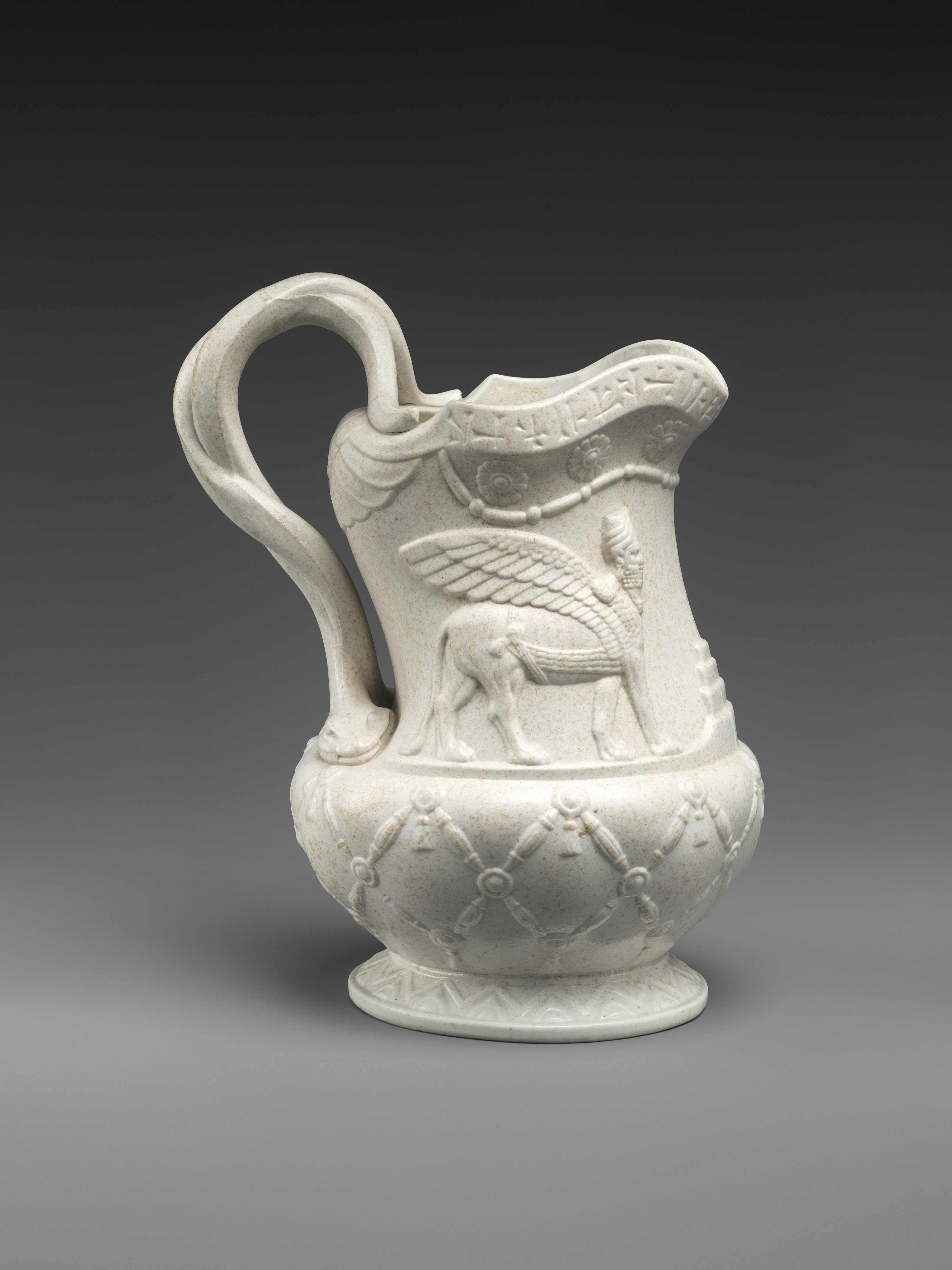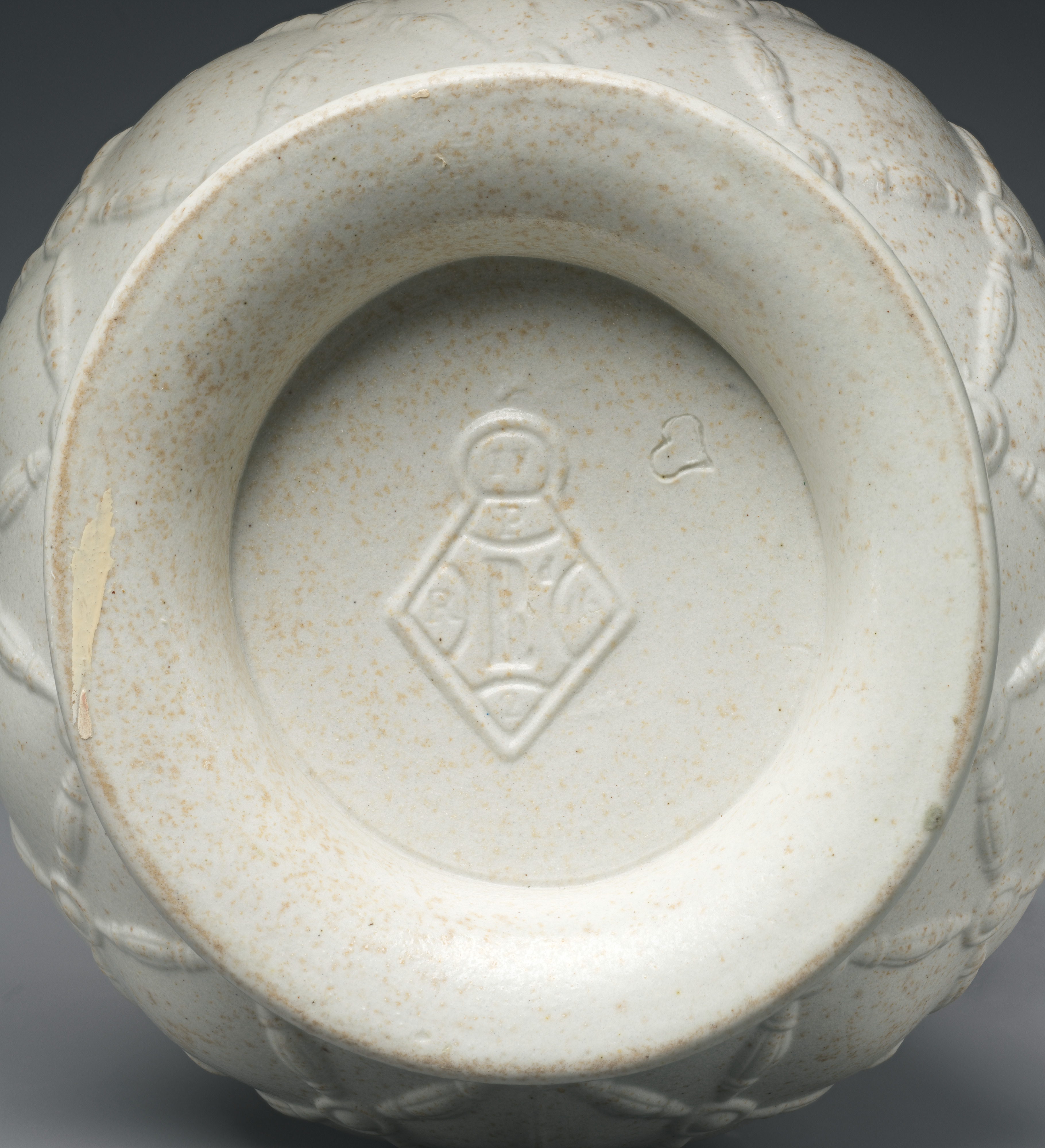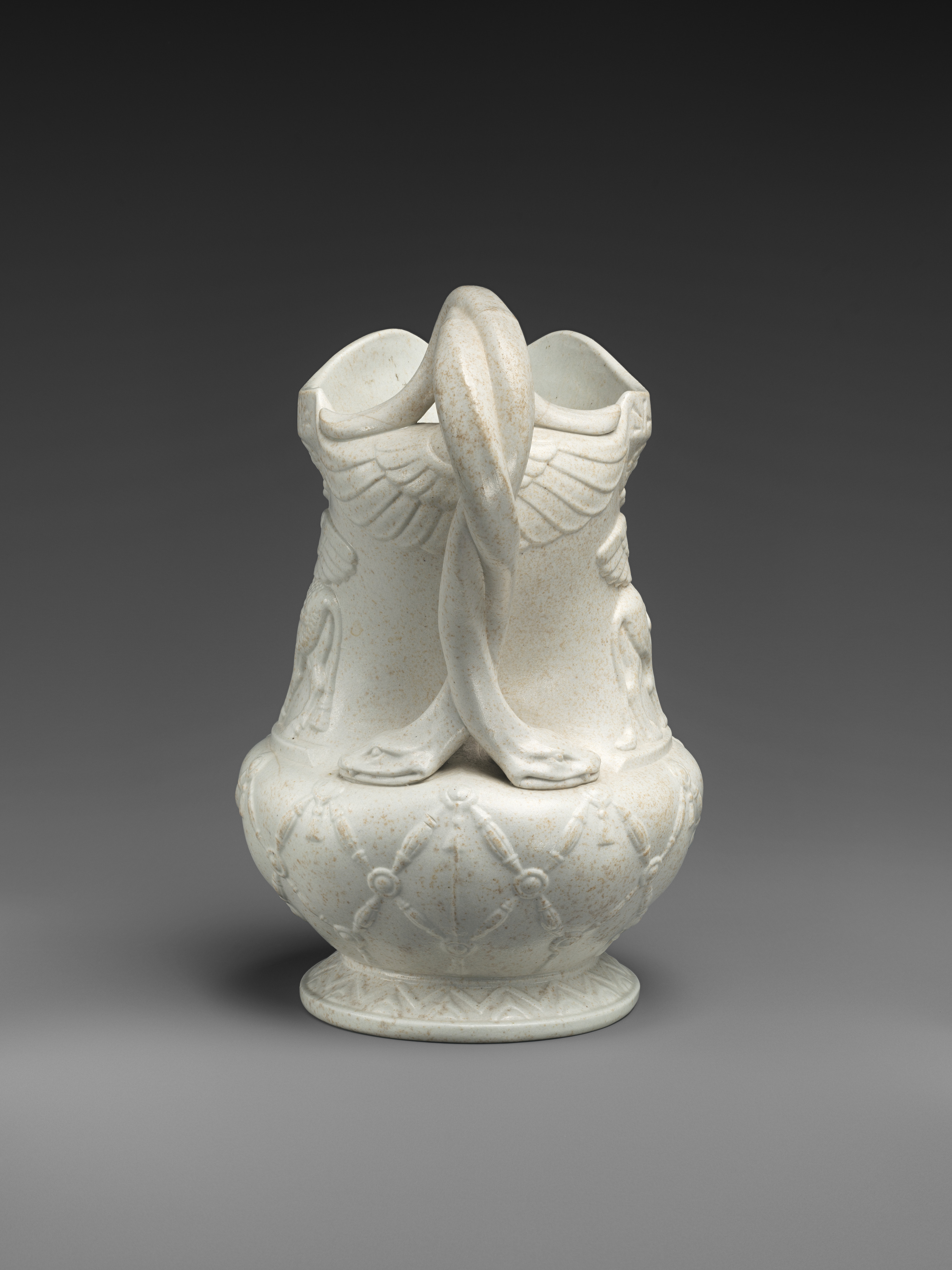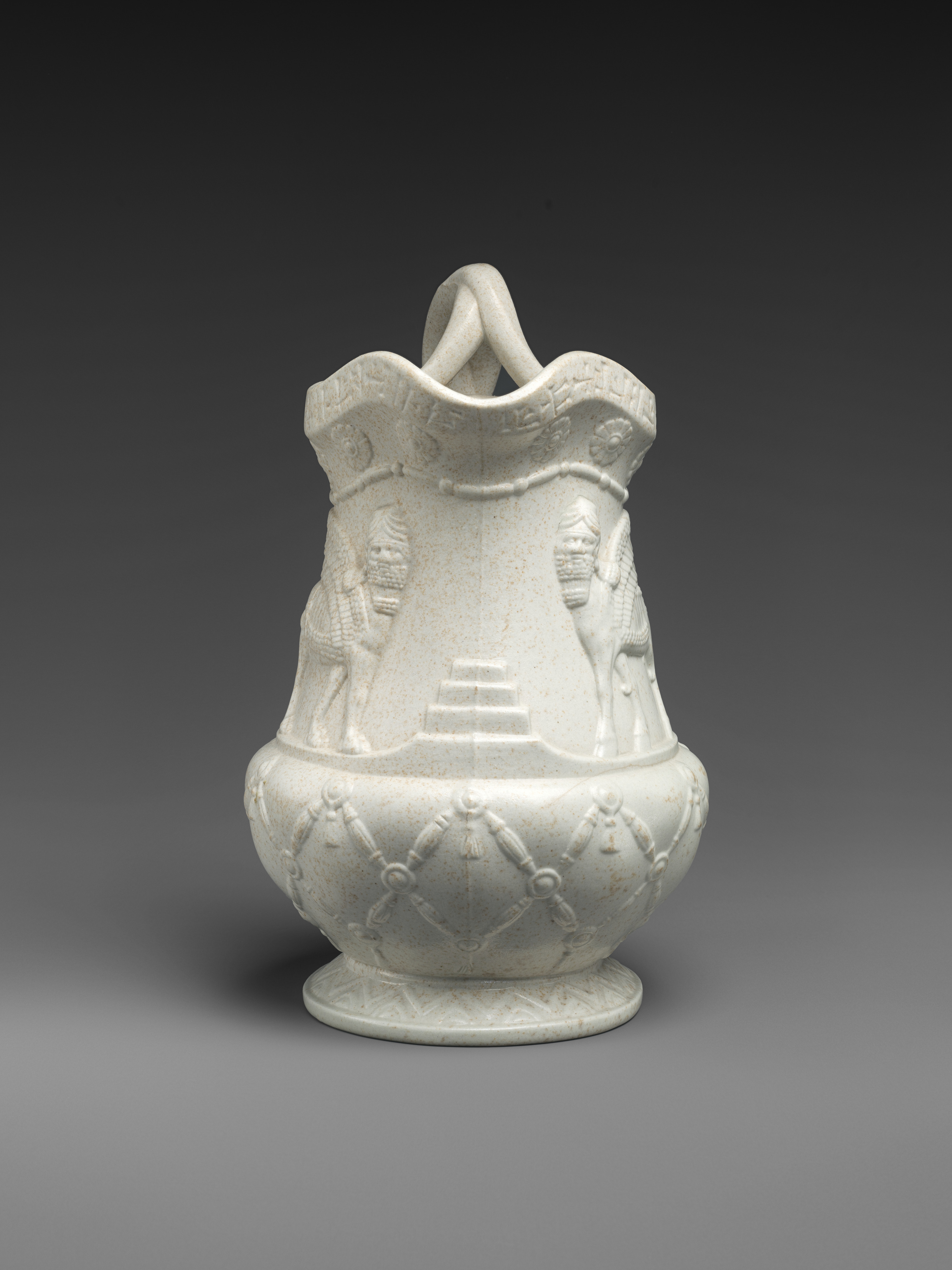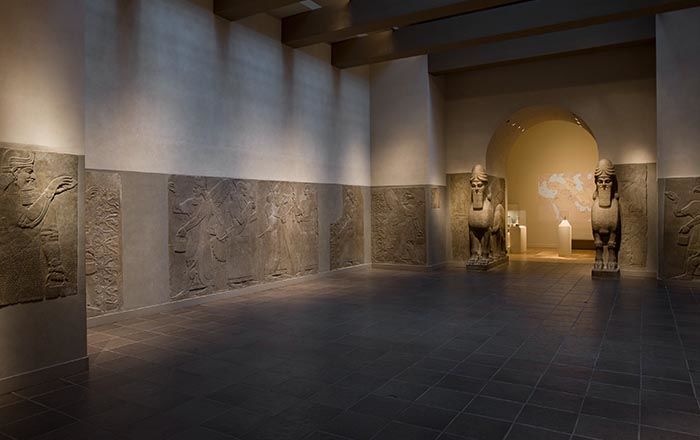Jug with Assyrian-inspired decoration
Not on view
Following the excavation of Assyrian palaces in the mid-nineteenth century, ancient Mesopotamian imagery began to be used in European decorative arts, including jewelry and ceramics. Publicity in the form of news coverage and popular books around the excavations, removal of many sculptures from sites in northern Iraq to England and France, and public spectacles such as the reconstructed ‘Nineveh Court’ in the Crystal Palace at Sydenham, London, fostered a fascination with Assyria and Assyrian art among the Victorian public.
Decorative ceramics were an affordable luxury, and the Staffordshire Potteries, six towns that today form the city of Stoke-on-Trent, were the British and at times global center of their production. The appearance of multiple designs incorporating Assyrian details in the mid-nineteenth century reflects the popular impact of the discoveries. This Ridgway and Abington design was part of a set in different sizes, and versions were produced with multiple color-schemes and finishes. Winged bulls on either side of the jug flank a stylized ziggurat—an ancient Mesopotamian temple-tower—pictured beneath the spout. The rosettes above the bulls are also drawn from Assyrian art, and below the rim is a pseudo-cuneiform inscription, based on the Assyrian inscriptions, not yet deciphered in 1851, that were found on many of the palace reliefs. The handle composed of two entwined snakes is a striking feature not drawn from Assyrian art, though the spread wings where the handle meets the rim of the jug are based on the winged discs representing deities seen in some of the Assyrian reliefs.
This image cannot be enlarged, viewed at full screen, or downloaded.
This artwork is meant to be viewed from right to left. Scroll left to view more.


